This version is different in the fact the ramp center point is at the tilt point like a cantilever carriage. It's a single load for the back of a pickup truck. It requires your truck's tailgate to be removed, which is a simple task for most models. This system could be used on any full-size truck in most cases. The only exception is the front wheel spacing may need adjustment. This depends on the truck's bed hills/valleys normally found on current truck beds. The wheels should run in the valleys.
The ramp weighs in at 204 pounds, while the hitch attachment is 51 and the ski bracket 9. The truck should handle this weight plus the sled just fine. The steel costs around $250 (depending on the current market and duty). The plastic runners were free (old truck bed). Other 1" strapping used is with 2 carabiners and 2 shackles. Red color was chosen for rear safety. The cost for sewing the strap ends (commercial vender) was $20. If you have a heavy duty machine you can sew it yourself. The hitch attachment was built in such a way to provide a clear view of the license plate (for obvious reasons).
All the components can be removed for summer storage. Obviously, you'll need a little help with the (heavy) ramp. The Author uses a rafter lift with a "boat" winch to store the unit out of the way. If you are equipped to weld aluminum that would be a plus for weight.
The ramp's frame is steel square tubing with a size of 2" x 3" x .120" thickness and length of 10'. The front part also uses the same tubing. For the wheel tracks 2" x 1" x .188" thickness steel channel was used and a length to fit inside the frame. An afterthought showed you could use .120" thickness to save a little weight and cost. For the wheels are two 4" casters, positioned upside down to met with the channel. While they were bought at the local Harbor Freight (Chinese junk) the weight rating of 400 lbs (each) was adequate for this application at $8 each. For the cross bars (for the sled's track to grab) is 1" x 1" x .188 thickness steel. This thickness is needed to ensure they don't sag in time. A few loops were welded on the frame for securing the strapping (and summer storage).
Pictures of the actual components were not available therefore, animations illustrate the steps, below.
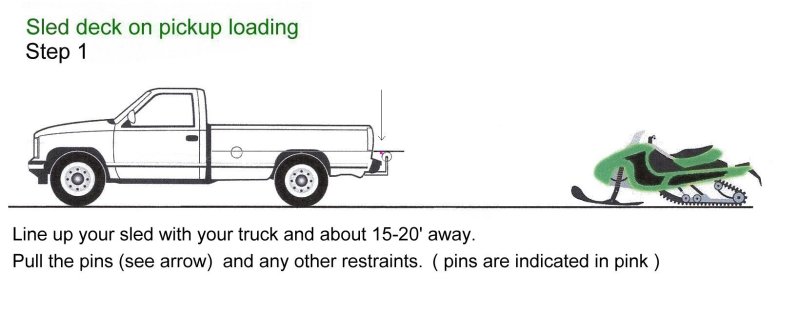
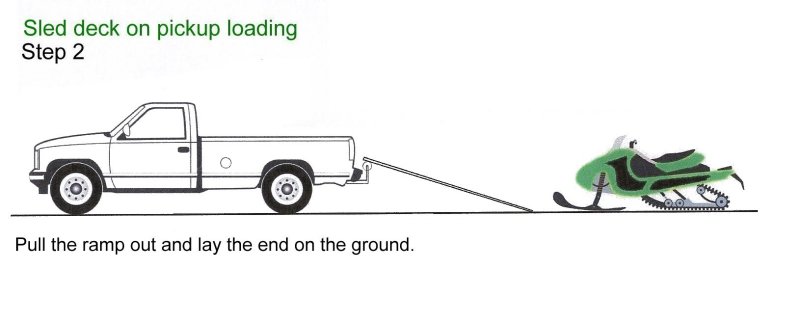
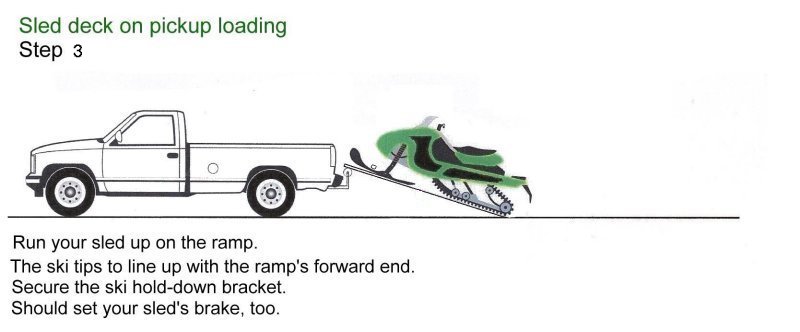
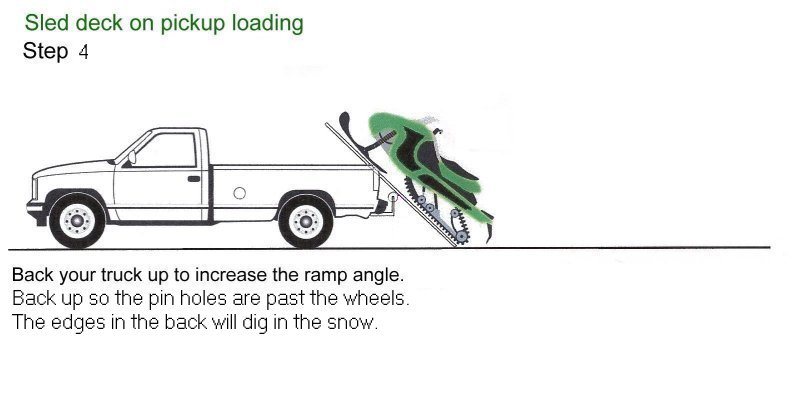
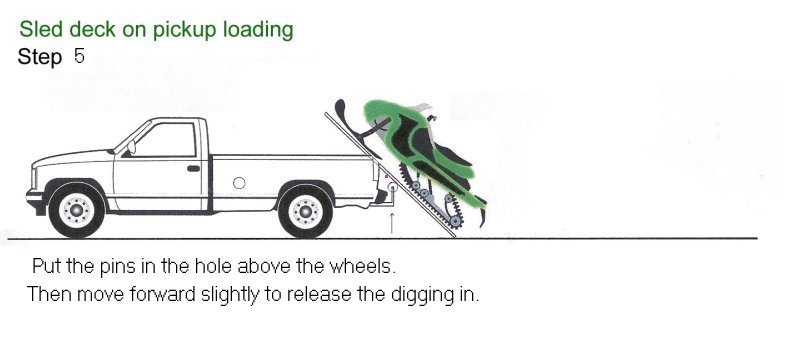
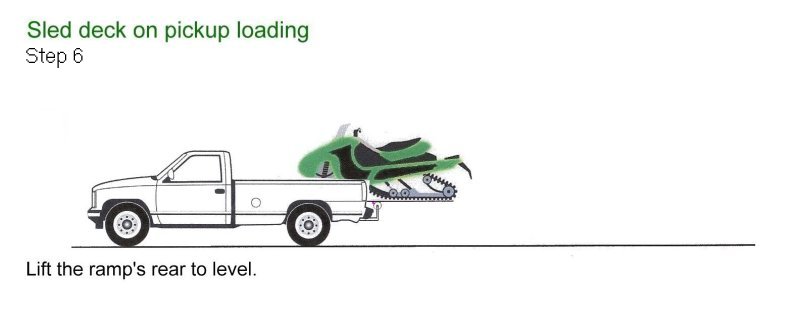
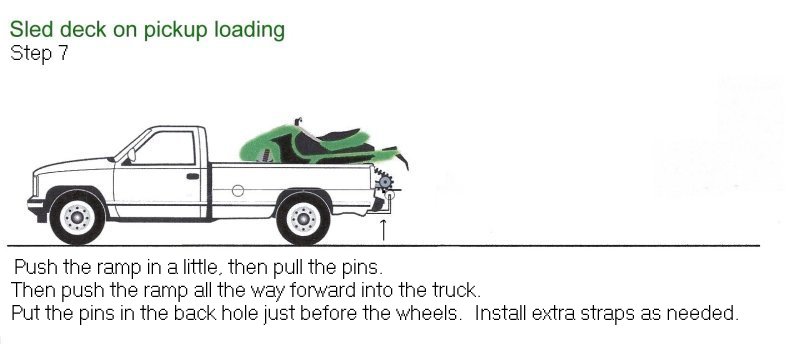
For unloading it's pretty much the reverse (no pun) order. One thought; While leaving the pins in the forward position and the sled's brake set, pull the ramp out and lower the end of it to the ground. Remove the ski bracket. Then release the sled's brake and let gravity run your sled down the ramp most of the way. Of course, if your sled has reverse, this is moot.
![[Karl's sled page]](images/winter_home3.gif)